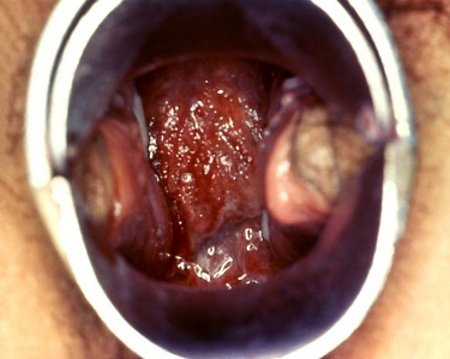Summary
Definition
History and exam
Key diagnostic factors
- presença de fatores de risco
- sensibilidade uterina
- dor à mobilização do colo
- dor à palpação anexial
Other diagnostic factors
- dor na parte inferior do abdome
- corrimento vaginal ou cervical anormal
- febre
Risk factors
- infecção prévia por clamídia ou gonorreia
- pouca idade no início da atividade sexual
- relações sexuais sem proteção com vários parceiros
- histórico prévia de DIP
- uso de dispositivo intrauterino (DIU)
- tabagismo
- baixa condição socioeconômica
- uso atual de duchas vaginais
- relação sexual durante a menstruação
Diagnostic tests
1st tests to order
- contagem de leucócitos
- células polimorfonucleares na microscopia de câmara úmida das secreções vaginais
- sonda genética ou cultura de secreções vaginais para Neisseria gonorrhoeae e Chlamydia trachomatis
- teste de amplificação de ácido nucleico para Mycoplasma genitalium
Tests to consider
- velocidade de hemossedimentação (VHS) sérica
- ultrassonografia transvaginal
- tomografia computadorizada (TC) pélvica
- ressonância nuclear magnética (RNM) pélvica
- laparoscopia
- biópsia do endométrio
Treatment algorithm
suspeita ou confirmação de doença inflamatória pélvica (DIP) leve ou moderada na manifestação inicial
DIP grave, complicações ou ausência de resposta à terapia intramuscular/oral
Contributors
Authors
Madhavi Manoharan, MD, FRCOG
Consultant Obstetrician and Gynaecologist
Integra Healthcare Ltd
Grand Cayman
Cayman Islands
Disclosures
MM declares that she has no competing interests.
Acknowledgements
Dr Madhavi Manoharan would like to gratefully acknowledge Dr Dan Selo-Ojeme and Dr Susan Arjmand, previous contributors to this topic.
Disclosures
DSO and SA declare that they have no competing interests.
Peer reviewers
Bradford Fenton, MD
Physician
Department of Obstetrics and Gynecology
Summa Health System
Akron
OH
Disclosures
BF declares that he has no competing interests.
Edmond Edi-Osagie, MBBS, MRCOG, MD
Consultant Gynaecologist
Central Manchester University Hospitals
St. Mary's Hospital
Manchester
UK
Disclosures
EEO declares that he has no competing interests.
Peer reviewer acknowledgements
BMJ Best Practice topics are updated on a rolling basis in line with developments in evidence and guidance. The peer reviewers listed here have reviewed the content at least once during the history of the topic.
Disclosures
Peer reviewer affiliations and disclosures pertain to the time of the review.
References
Key articles
Workowski KA, Bachmann LH, Chan PA, et al. Sexually transmitted infections treatment guidelines, 2021. MMWR Recomm Rep. 2021 Jul 23;70(4):1-187.Full text
British Association for Sexual Health and HIV. UK national guideline for the management of pelvic inflammatory disease. Jan 2019 [internet publication].Full text
Ross J, Guaschino S, Cusini M, et al. 2017 European guideline for the management of pelvic inflammatory disease. Int J STD AIDS. 2018 Feb;29(2):108-14.Full text Abstract
American College of Radiology. ACR appropriateness criteria: acute pelvic pain in the reproductive age group. 2023 [internet publication].Full text
Reference articles
A full list of sources referenced in this topic is available to users with access to all of BMJ Best Practice.

Differentials
- Gravidez ectópica
- Apendicite aguda
- Complicações do cisto ovariano (cisto ovariano roto, torção do cisto ovariano, cisto ovariano hemorrágico)
More DifferentialsGuidelines
- ACR appropriateness criteria: acute pelvic pain in the reproductive age group
- European guideline on the management of Mycoplasma genitalium infections
More GuidelinesPatient information
Clamídia
Miomas
More Patient informationLog in or subscribe to access all of BMJ Best Practice
Use of this content is subject to our disclaimer